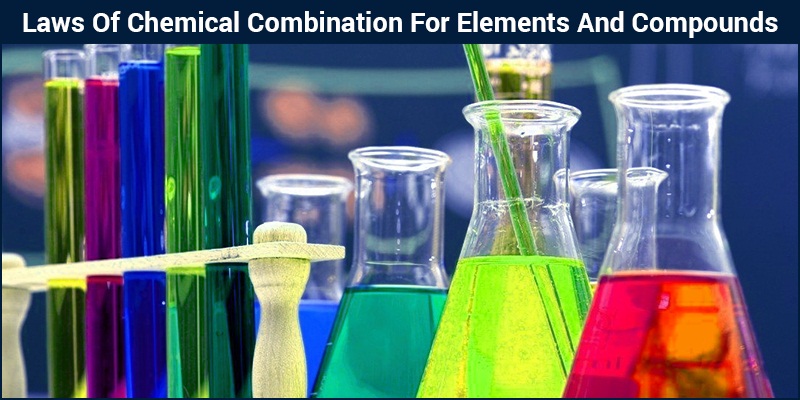The laws of chemical combination serve as basic foundation for deciding different ways in which atoms and molecules can combine and react with each other in any chemical reaction. These laws describe the basic principles which are obeyed by the interaction of atoms and molecules. These interactions can occur in many ways and in different combinations. There are numerous chemical reactions and they may be complex but they are continually governed by the laws of chemical combination. These laws of chemical combination, lay ground work for the analysis of chemical reactions.

Here, the laws of chemical combination will be discussed.
Law of Conservation of Mass
This law states that matter can neither be created and can nor be destroyed instead it is changed from one state to another state. In other words, net change in the mass of products and reactants before and after reaction is zero. This law was proposed in 1744 by Antoine Lavoisier. This law is derivation of Daltons atomic theory that atoms cannot be created and cannot be destroyed. It focuses that mass always remains conserved.
Law of Constant Proportion
According to the law of constant proportion, if a compound is broken then the masses of constituting elements should remain same in proportion. This law says that same elements are combined and in same proportions by mass in all pure samples of same chemical compounds.
Law of Multiple Proportions
The law of multiple proportion states that if two elements form two or more than two compounds, then the ratio of masses of second element in each of the compound can be expressed in terms of the small whole numbers. This law has been proved by John Dalton in 1804. An example is that two oxides are formed by carbon in oxygen such as carbon dioxide and carbon monoxide.
Law of Reciprocal Proportions
The law of reciprocal proportion reveals that if two different elements are combined with same quantity of third element then the ratio in which they will react will be same or it will be multiple of proportion in which they tend to combine with each other. This law was proposed in 1794 by Richer. This law provides the basis to the law of equivalent masses.
Gay Lussac’s law of Combining Volumes
This law states that at given pressure and temperature the volume of all of the gaseous reactants and products are having simple whole number ratio to each other. For example, the reaction between one volume of chlorine and one volume of hydrogen make two volumes of HCl gas. Here the ratio by volume bearing by gas is 1:1:2 and it is the simplest whole number ratio.
Avogadro’s Law
This law was proposed by Avogadro and it states that at same pressure and temperature, equal volume of gasses should contain the equal number of molecules. For example, hydrogen and oxygen combine to form water and two volumes of hydrogen are combined with one of the oxygen volume and gives two volumes of water and there is no unreacted oxygen.